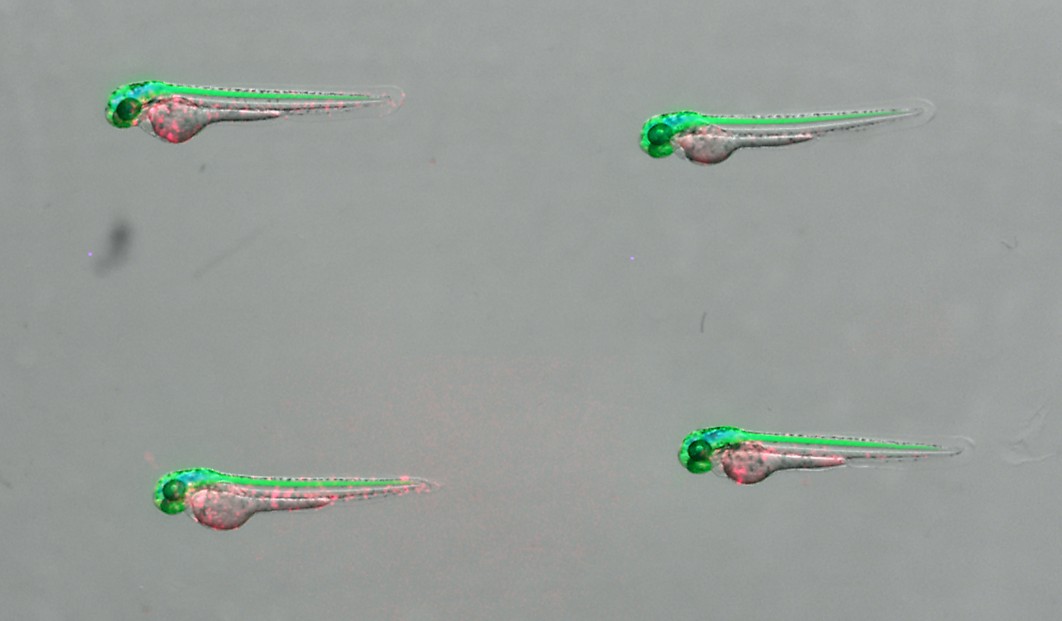Creating a zebrafish model of Sanfilippo Type A
The Sanfilippo Children’s Foundation and Cure Sanfilippo Foundation have awarded funds to the Australian Regenerative Medicine Institute at Monash University in Melbourne to create a zebrafish model of Sanfilippo. The project, led by zebrafish disease modelling expert Dr Jan Kaslin, aims to produce a new tool to be used in the fight against Sanfilippo.

“We are excited to be funding this project that could open up new avenues for Sanfilippo research around the world, providing a new tool for understanding this devastating condition and developing much-needed new therapies,” said Megan Donnell, Executive Director of the Sanfilippo Children’s Foundation.
Dr. Cara O'Neill, Scientific Director of Cure Sanfilippo Foundation said: "We are pleased to support Dr. Kaslin's work which will create a new experimental model for the study of Sanfilippo disease. Unique aspects of the zebrafish model offer the potential to accelerate the rate of drug discovery for children who are in dire need."
Zebrafish are a useful research tool because they allow quick and precise understanding of the mechanisms of disease and they can be used in the search for drugs. Zebrafish have already been used to help unlock a number of biological processes behind diseases such as muscular dystrophy.
Zebrafish are transparent so the cellular processes inside their bodies can be watched in real-time under a microscope. They are also small, hardy, cheap to keep and they breed and grow incredibly quickly, producing hundreds of embryos each week.
The researchers will breed zebrafish with changes in the SGSH gene like those that cause Sanfilippo Type A in children. They will also breed them with fish that have certain cell types labelled with fluorescent markers that allow the development of the fish to be studied.
The researchers will then examine the characteristics of the Sanfilippo fish in terms of behaviour and neurodegeneration. The fish will then be ready to be used by both researchers at the Australian Regenerative Medicine Institute and scientists worldwide seeking to further understand Sanfilippo and develop treatments.
One example of a use for the model is for high-throughput drug screening. This will make use of the fast breeding cycle of the zebrafish to grow large numbers of Sanfilippo fish. Each fish would then be exposed to a different potential drug. Dr Kaslin’s research group has access to large libraries of hundreds of potential drugs that could be tested for their ability to improve symptoms in the fish.
The Foundation is joined by Cure Sanfilippo (USA) as a funding partner, contributing a combined AUD$90,000 to this project.

Project Update
The first Sanfilippo zebrafish model has been created and characterised as part of Dr Jan Kaslin’s Incubator grant funded by the Sanfilippo Children’s Foundation and Cure Sanfilippo Foundation. Dr Kaslin and his team confirmed that the zebrafish lacked functional sulfamidase, the enzyme involved in type A, and gradually accumulated heparan sulfate in tissues over time. The fish were examined to characterise changes in their anatomy, behaviour and biochemistry, which revealed significant differences between Sanfilippo and non-Sanfilippo fish. For example, neuroinflammation and hyperactivity were seen in the Sanfilippo zebrafish model. Therefore, it will be a useful model when testing potential therapies in zebrafish in the future. Dr Kaslin hopes to collaborate with other Sanfilippo researchers and continue these studies, using the zebrafish as tools to discover potential new treatments for patients with Sanfilippo.
Dr Jan Kaslin is a cell biologist who studied in Finland and worked in Germany before being recruited to the
Australian Regenerative Medicine Institute to lead a research group working on neural stem cell regulation,
neural regeneration and disease modelling in vertebrates.
Project Summary
- Chief investigator: Dr Jan Kaslin
- Project title: Creating a MPSIII zebrafish model and brain specific in vivo lysosome reporter for drug screening and in-vivo imaging of disease pathology
- Amount: $45K (over 1 year), with Cure Sanfilippo Foundation contributing a further $45K
- Location: Victoria, Australia
- Status: Completed
- Start date: February 2018




